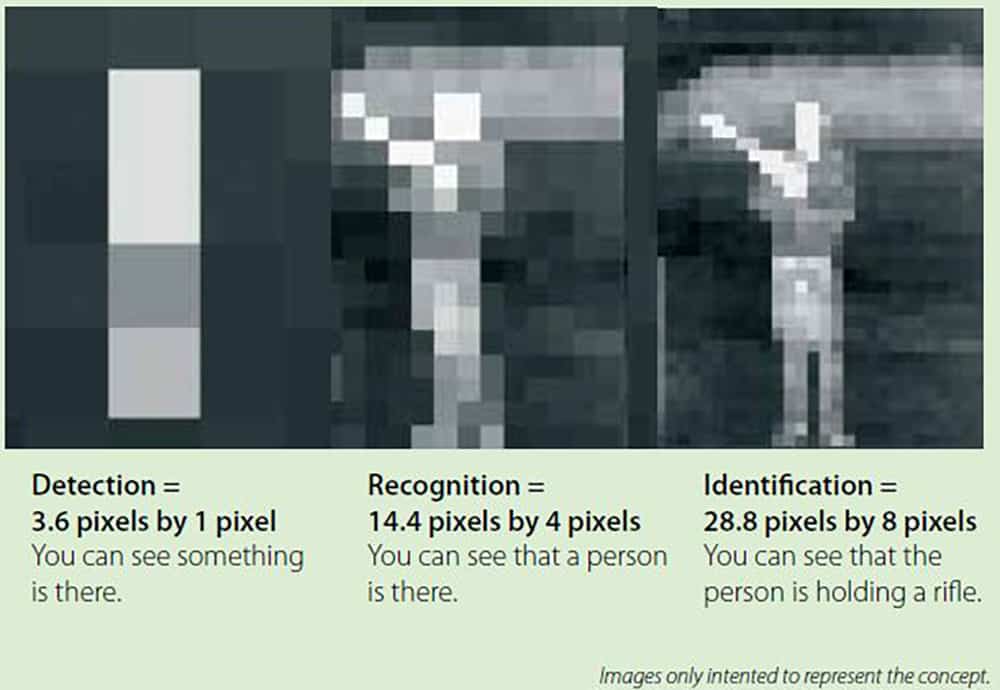Detection Ranges – DRI
When people shop around for a thermal imaging device, one of the most frequent questions they ask is “how far can I see with it and what will I see at that range?” It may sound strange, but this question is extremely complex and many-sided. To get a precise answer one needs to consider a variety of factors that could be separated into two groups: Internal and External Factors
Before we identify these factors, let us first define the terms “Detection”, “Recognition” and “Identification” often just called DRI. These definitions are based on work by J. Johnson who introduced a criterion to assess performance of optical equipment back in the 1950s.
- Detection: you can distinguish an unknown object from the background.
- Recognition: you can tell what kind of object this is (e.g., human, car, etc.).
- Identification: you can describe the object in detail (e.g., a male civilian or a four-door sedan).
Under this criterion for a human – you need just 1.5 pixels to detect a target, 6 pixels to Recognize it and 12 pixels to ID it with a few other factors as well – so you can see that it really depends on how the manufacturer defines detection to give you the amazing detection ranges.
Hence believing you are going to ‘see’ a deer at 2,000m is best described as BS – few dots maybe.
Remember Thermals only typically have 2-4x optical zoom!
Internal factors that determine the range are related to the characteristics of the thermal system you are using. These parameters are detector sensitivity, lens focal length, lens f-number, thermal detector’s resolution, display resolution and type (small or large), brightness and focus.
External factors involve object size, environmental and weather conditions, the difference between the object and what the background is (complex, open ground, cold clay, hot rocks etc.)
Even your own experience counts.
Look at the images above, happy with that level of ID?
It now becomes obvious that one cannot give a definitive and universal answer to that “how far?” question. Some manufacturers bluntly state detection, recognition and identification figures, or DRI for short without even mentioning what these performance figures depend on; other than a “deer”.
Let’s look at the other end of the scale: You’ve probably seen the nice-looking huge deer, bear or giraffe photos taking up a lot of the image from competitors marketing – ever wondered how far they are? REAL CLOSE is the answer
If they are not showing you images with the distances in New Zealand or Australian locations and conditions then you need to ask why?!
So, the real answer is to have real world local images/videos with ranges so they can see exactly what they will see – it also saves any confusion or false expectations and removes BS from unrealistic figures.

